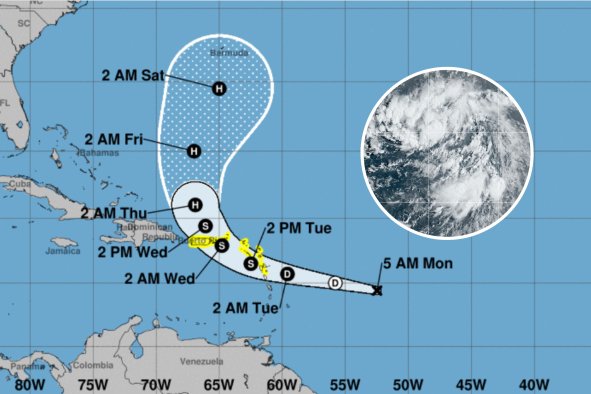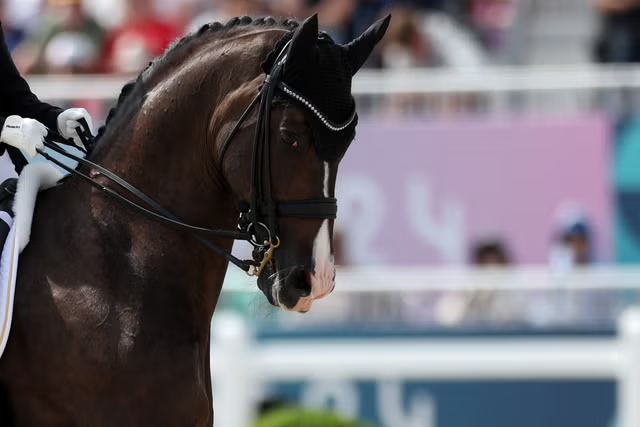Paleontologists have identified a "remarkable" new species of crocodilian that lived around 135 million years ago during the Mesozoic Era, or the Age of the Dinosaurs.
The species, dubbed Enalioetes schroederi, was a fully aquatic marine creature that roamed the shallow seas that covered much of what is now Germany in the Cretaceous period (145 million to 66 million years ago), a study published in the Journal of Systematic Palaeontology reports.
E. schroederi belonged to a crocodilian family known as the Metriorhynchidae, a remarkable group that evolved several distinctive adaptations, including a dolphin-like body plan, smooth scale-less skin, flippers and a tail fin. These features set them apart from modern crocodilians, which include true crocodiles, alligators, caimans and gharials, not to mention other extinct relatives. (The term crocodilian refers to a group that encompasses all of these related crocodile-like reptiles, extinct and living.)
Metriorhynchids hunted a variety of prey, including fast-moving animals like squids and fish, although some had large, serrated teeth, indicating that they fed on other marine reptiles.
The E. schroederi fossils represent one of the youngest occurrences of the metriorhynchids in the Cretaceous, casting new light on the diversity of the creatures in this period. This family is best known from the preceding Jurassic period (201 million to145 million years ago). By contrast, documented fossils of this group dated to the Cretaceous are sparse.
"Enalioetes gives us fresh insight into how metriorhynchids were evolving during the Cretaceous Period. During the Jurassic, metriorhynchids evolved a body-plan radically different from other crocodiles—flippers, tailfin, loss of bony armour and smooth scaleless skin. These changes were adaptations to an increasingly marine lifestyle," said Mark Young, an author of the study, in a press release.
"Enalioetes shows us that this trend continued into the Cretaceous, as [it has] even larger eyes than other metriorhynchids and the bony inner ears were even more compact than other metriorhynchids—a sign that Enalioetes was probably a faster swimmer," said Young, who is with the School of GeoSciences at Scotland's University of Edinburgh.
The new species was described based on a three-dimensional skull and first neck vertebra originally unearthed in a quarry in Sachsenhagen near the city of Hannover, Germany. This specimen represents the most complete and well-preserved metriorhynchid skull known from the Cretaceous, according to the study.
The study's lead author, Sven Sachs, said in the release, "The specimen is remarkable as it is one very few metriorhynchids that is known by a three-dimensionally preserved skull. This allowed us to CT scan the specimen and so we were able to learn a lot about the internal anatomy of these marine crocodiles.
"The remarkable preservation allowed us to reconstruct the internal cavities and even the inner ears of the animal," said Sachs, who is with the Natural History Museum in Bielefeld, Germany.
The fossil specimen was discovered more than a hundred years ago by a German government architect and was subsequently handed to Henry Schroeder of the Prussian Geological Survey in Berlin for preparation and study. It was thought to have been lost during World War II, only to be rediscovered at a later date in the Minden Museum, in western Germany, where it has since been kept.
Previously, scientists had attributed the specimen to other groups of species (known as genera) within the Metriorhynchidae family. But in the latest study, the authors demonstrated that the specimen represents an entirely new group of species thanks to its "unique" skeletal traits.
Do you have an animal or nature story to share with Newsweek? Do you have a question about paleontology? Let us know via science@newsweek.com.
References
Sachs, S., Young, M.T., Hornung, J.J., Cowgill, T., Schwab, J.A., & Brusatte, S.L. (2024). A new genus of metriorhynchid crocodylomorph from the Lower Cretaceous of Germany. Journal of Systematic Palaeontology.
Disclaimer: The copyright of this article belongs to the original author. Reposting this article is solely for the purpose of information dissemination and does not constitute any investment advice. If there is any infringement, please contact us immediately. We will make corrections or deletions as necessary. Thank you.



